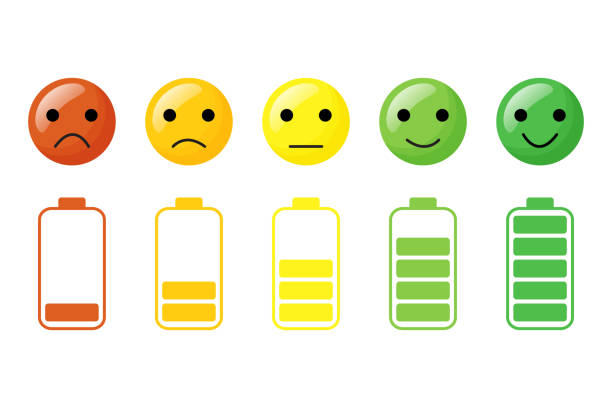
Modern medicine has largely been built on biochemistry — hormones, enzymes, neurotransmitters, and pharmaceuticals designed to tweak them. But an increasing number of scientists, researchers, and functional health practitioners are challenging that paradigm.
They’re asking a deeper question:
What if biochemistry isn’t the root… but the result?
And what if the true root of disease lies in something even more elemental: cellular energy loss?
🔋 The Cell Is an Engine — and Energy Is Its Fuel
Every cell in your body is powered by tiny energy factories called mitochondria. These organelles take in nutrients and oxygen and produce ATP (adenosine triphosphate) — the cell’s energy currency. That energy fuels everything:
- Muscle contraction
- Brain signaling
- Hormone production
- Immune defense
- Tissue repair
When energy levels drop, the cell can no longer maintain its internal balance — known as homeostasis. And over time, this lack of power can lead to dysfunction, degeneration, and disease.
⚛️ Physics Comes Before Chemistry
Here’s the shift in thinking:
Traditional medicine often starts with chemistry — measuring or manipulating the substances in the body (glucose, cholesterol, serotonin, etc.).
But cells don’t run on chemicals — they run on energy.
Energy governs chemistry.
When a cell is low on energy, the following happens:
- Enzymes stop working properly
- Membranes lose integrity
- DNA repair falters
- Inflammation escalates
- Toxins accumulate
This suggests that the physical state of energy production and transfer is foundational to the chemical reactions that follow. The problem isn’t just biochemical imbalance — it’s bioenergetic failure.
🧬 What the Research Says
Some pioneering scientists are leading this reframing of disease:
🔹 Dr. Doug Wallace (Children’s Hospital of Philadelphia)
- Widely regarded as the father of mitochondrial medicine
- Has shown that many chronic diseases — from autism to Alzheimer’s — have mitochondrial dysfunction at their core
- Believes genetics alone can’t explain these diseases, but energy failure can
🔹 Dr. Robert Naviaux (UC San Diego)
- Proposed the “Cell Danger Response” model
- Suggests that when energy drops, cells shift into a protective state that resembles disease
- Believes restoring energy metabolism is key to healing chronic conditions
🔹 Dr. Jack Kruse (Neurosurgeon turned mitochondrial researcher)
- Argues that modern diseases are driven by a mismatch between our biology and environment — especially light, magnetism, and circadian rhythms
- Emphasizes that quantum biology and mitochondrial efficiency are more foundational than genetic mutations
🧠 Implications for Health and Healing
This model shifts our entire approach:
- Instead of asking what chemical is out of balance, ask what energy process has broken down.
- Instead of starting with pills, start with light, movement, breath, and sleep — the foundations of mitochondrial health.
This is why basic habits like:
- Morning sunlight
- Red light therapy
- Deep sleep
- Clean movement and breath
- Eliminating toxins that disrupt the mitochondria
…can have a profound impact on performance and healing — even before we reach for supplements or prescriptions.
🔄 A Return to Root Cause
Understanding disease as an energy loss problem reframes everything:
- Alzheimer’s as “type 3 diabetes” (mitochondrial failure in the brain)
- Cancer as uncontrolled growth in an energetically bankrupt environment
- Autoimmunity as a danger signal stuck in the “on” position
- Even depression as an energetic collapse in neuronal signaling
This isn’t to say biochemistry doesn’t matter — it does. But it’s a downstream effect. Physics — especially bioenergetics — is upstream.
✝️ The Aruka Perspective
At Aruka, we often say that health is not just the absence of disease — it’s the presence of life. And life requires energy.
Scripture says, “In Him was life, and that life was the light of men.” (John 1:4)
When our bodies are aligned with design — when they receive the rhythms, nourishment, movement, rest, and light they were made for — energy flows. Cells heal. Systems recover.
Disease, then, is not just a condition to be managed. It’s a signal — pointing us back to the loss of vitality that begins with energy failure.
And restoring health starts by restoring the source.
📚 Sources
- Wallace, D. C. (2010). Mitochondrial DNA mutations in disease and aging. Environmental and Molecular Mutagenesis.
- Naviaux, R. K. (2014). Metabolic features and regulation of the healing cycle—A new model for chronic disease pathogenesis and treatment. Mitochondrion.
- Wallace, D. C. (2005). A mitochondrial paradigm of metabolic and degenerative diseases, aging, and cancer: a dawn for evolutionary medicine. Annual Review of Genetics.
- Kruse, J. (2013–2020). Mitochondrial Series, jackkruse.com
- Nicolson, G. L. (2007). Mitochondrial dysfunction and chronic disease. Integrative Medicine.
- Lane, N. (2005). Power, Sex, Suicide: Mitochondria and the Meaning of Life. Oxford University Press.
Leave a Reply